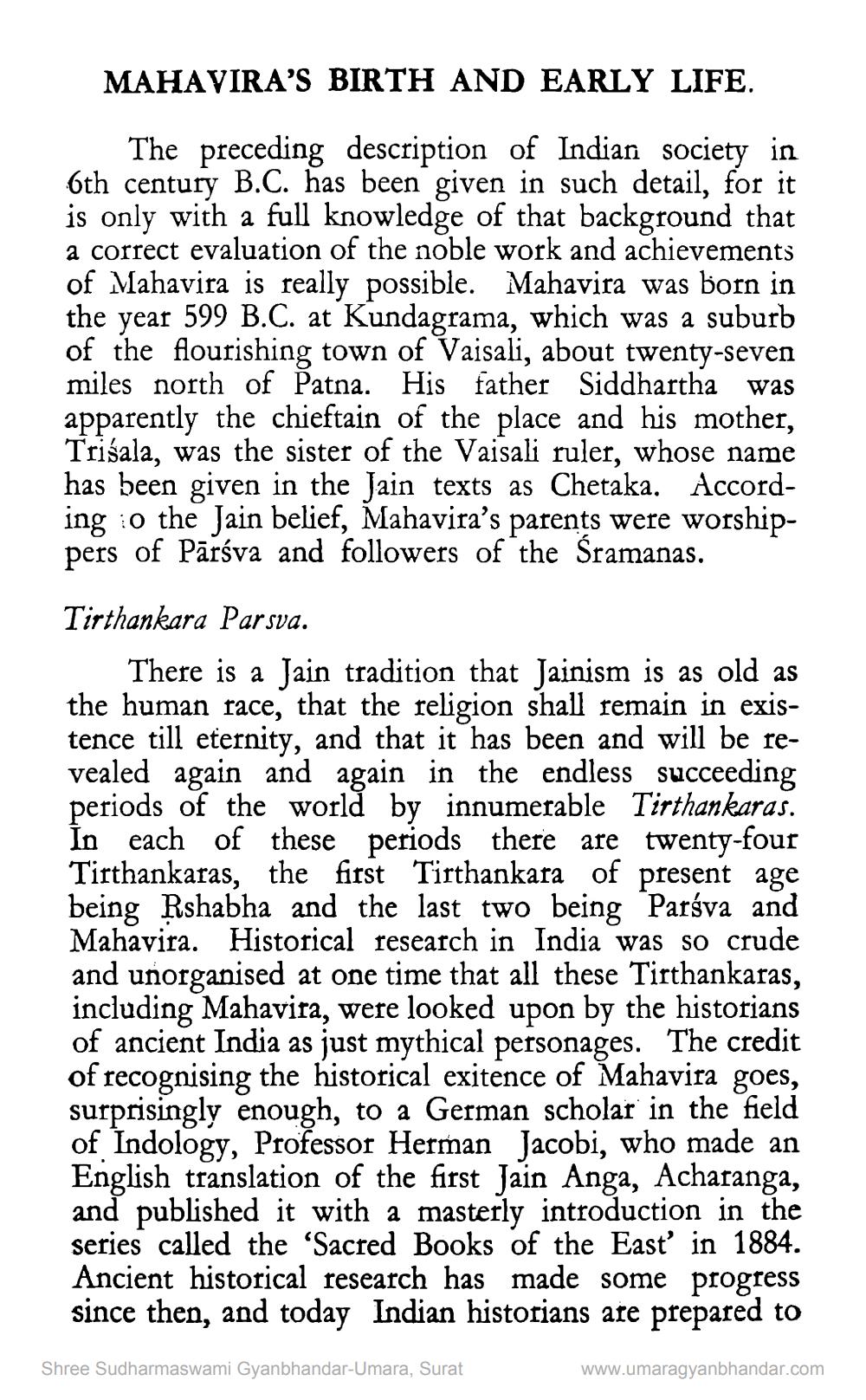________________
MAHAVIRA'S BIRTH AND EARLY LIFE.
The preceding description of Indian society in 6th century B.C. has been given in such detail, for it is only with a full knowledge of that background that a correct evaluation of the noble work and achievements of Mahavira is really possible. Mahavira was born in the year 599 B.C. at Kundagrama, which was a suburb of the flourishing town of Vaisali, about twenty-seven miles north of Patna. His father Siddhartha was apparently the chieftain of the place and his mother, Trišala, was the sister of the Vaisali ruler, whose name has been given in the Jain texts as Chetaka. According :o the Jain belief, Mahavira's parents were worshippers of Pārśva and followers of the Sramanas.
Tirthankara Parsva.
There is a Jain tradition that Jainism is as old as the human race, that the religion shall remain in existence till eternity, and that it has been and will be revealed again and again in the endless succeeding periods of the world by innumerable Tirthankaras. In each of these periods there are twenty-four Tirthankaras, the first Tirthankara of present age being Rshabha and the last two being Parýva and Mahavira. Historical research in India was so crude and unorganised at one time that all these Tirthankaras, including Mahavira, were looked upon by the historians of ancient India as just mythical personages. The credit of recognising the historical exitence of Mahavira goes, surprisingly enough, to a German scholar in the field of Indology, Professor Herman Jacobi, who made an English translation of the first Jain Anga, Acharanga, and published it with a masterly introduction in the series called the 'Sacred Books of the East' in 1884. Ancient historical research has made some progress since then, and today Indian historians are prepared to
Shree Sudharmaswami Gyanbhandar-Umara, Surat
www.umaragyanbhandar.com




